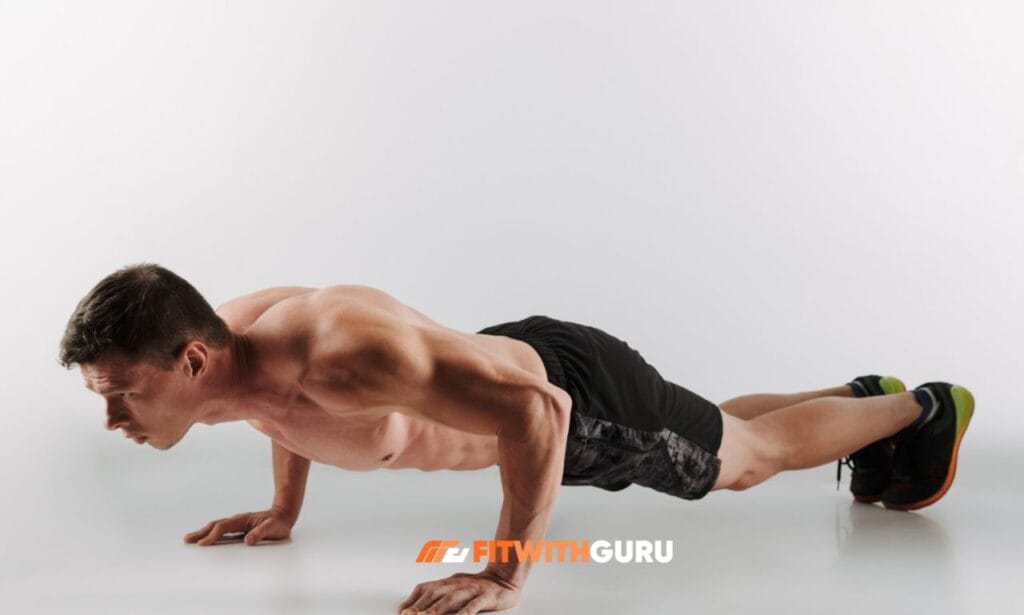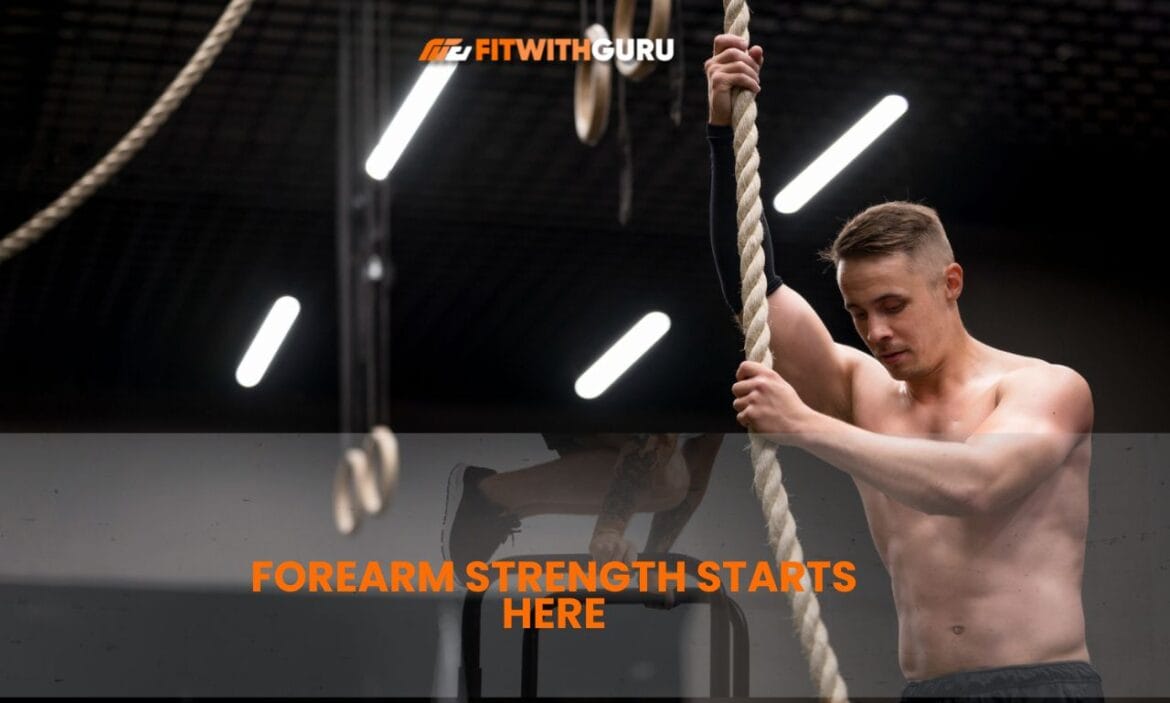Forearm calisthenics workouts are gaining significant attention among fitness enthusiasts and athletes alike for their effectiveness in building forearm strength, endurance, and grip power.
These exercises, often involving bodyweight movements, focus specifically on the muscles in the forearms and help develop functional strength for various activities like lifting, rock climbing, and sports.
In this ultimate guide to forearm calisthenics, we will walk you through everything you need to know about forearm training—from the best exercises to avoid common mistakes.
Get ready to unlock the full potential of your forearms!
Why Forearm Calisthenics Matter
Forearm calisthenics are more than just a means to increase muscle size. They play a key role in improving grip strength, wrist stability, and overall hand functionality.
Strong forearms support your performance in many exercises and sports, allowing you to lift heavier weights, climb faster, and perform other dynamic movements with ease.
Strengthening the forearms also helps reduce the risk of injuries that are commonly associated with weak or imbalanced wrist and forearm muscles.
When your forearms are properly conditioned, you can perform better and reduce the risk of strain, sprains, or repetitive stress injuries.
Key Benefits of Forearm Calisthenics
Incorporating forearm calisthenics into your workout routine brings numerous advantages. Here’s a closer look at some of the key benefits:
- Improved Grip Strength – Forearm exercises target the muscles responsible for grip strength. A stronger grip is beneficial for activities such as weightlifting, martial arts, and even daily tasks like opening jars.
- Increased Endurance – Forearm calisthenics improve muscular endurance, which is crucial for sports like tennis, baseball, or rock climbing, where you need sustained grip strength over extended periods.
- Injury Prevention – Strengthening your forearms helps prevent common injuries, such as wrist strain, elbow tendonitis, and carpal tunnel syndrome, especially if you perform repetitive hand or wrist motions.
- Better Performance in Other Exercises – Forearm strength is directly related to your ability to perform exercises like pull-ups, deadlifts, and rows. A stronger grip and forearms allow you to lift heavier weights and perform more repetitions.
Top Forearm Calisthenics Exercises
A variety of exercises can help you develop stronger forearms. The following are some of the best forearm calisthenics exercises you can incorporate into your workout routine:
Push-Ups for Forearms
While traditional push-ups mainly target the chest, shoulders, and triceps, they also engage the forearms. When performed correctly, push-ups help improve wrist stability and forearm strength.
To increase forearm engagement, try different variations such as knuckle push-ups or decline push-ups. These modifications increase the strain on your forearms, leading to greater muscle activation.

Plank Holds for Forearms
The plank is a well-known core-strengthening exercise that also targets your forearms. By holding the plank position, you engage the muscles of the forearms, shoulders, and back, helping to build endurance and strength.
To make this exercise even more challenging for your forearms, try holding the plank for extended periods or incorporate side planks.
Towel Grip Pull-Ups
Towel grip pull-ups are an excellent way to build forearm strength. Instead of gripping the pull-up bar directly, drape a towel over the bar and hold onto the ends while performing the pull-up.
This forces your forearms to work harder, improving grip strength and endurance. Towel grip pull-ups also target the biceps, shoulders, and upper back.
Farmer’s Walk
The farmer’s walk involves holding heavy weights in each hand (such as kettlebells or dumbbells) and walking for a specific distance or time.
This exercise is a fantastic way to build grip strength and forearm endurance, as your forearms are required to maintain a firm hold on the weights throughout the movement.

Wrist Curls and Reverse Wrist Curls
Isolation exercises that target the wrist flexors and extensors, especially include wrist curls and reverse wrist curls.
Using a dumbbell or barbell, wrist curls involve curling the wrists up and down while seated. Reverse wrist curls target the opposite muscle group by extending the wrists upward.
These exercises should be done with controlled movements and lighter weights to avoid straining the wrist.
Dead Hangs
Dead hangs are one of the simplest yet most effective exercises for forearm development. Simply hang from a pull-up bar for as long as you can, engaging your forearm muscles to maintain your grip.
This exercise also enhances shoulder stability and endurance, making it a valuable addition to your routine.
Forearm Rollers
Forearm rollers are a specialized piece of equipment that can be used to build grip strength and forearm endurance. The roller consists of a bar with a rope attached to it, with a weight at the end of the rope.
To use the forearm roller, roll the rope up and down, forcing your forearms to work hard to control the movement. This exercise is an excellent way to enhance your grip strength.
How to Incorporate Forearm Calisthenics into Your Routine
When it comes to forearm training, consistency is key. However, you don’t need to dedicate entire workouts solely to your forearms. Instead, incorporate forearm exercises into your existing routine to make them more effective.
Here are some tips on how to incorporate forearm calisthenics into your workout:
Frequency and Intensity
To see significant improvements, aim to train your forearms 2-3 times per week. Focus on low-intensity exercises initially, then gradually increase the intensity as you become stronger.
If you’re training other muscle groups, such as your back or shoulders, incorporate forearm exercises towards the end of the workout when your muscles are already fatigued.
Progressive Overload
Just like with any muscle group, progressive overload is essential for building strength. Start with basic exercises, and as your forearm muscles adapt, increase the difficulty by adding resistance, duration, or variations to the exercises.
For example, you can add more weight to your wrist curls, extend your plank holds, or increase the number of pull-up repetitions.
Common Mistakes to Avoid in Forearm Calisthenics
As with any workout, it’s important to avoid common mistakes that can hinder your progress or increase the risk of injury. Here are some common mistakes to watch out for in forearm calisthenics:
Overtraining
Your forearms, like all muscles, need adequate time to recover. Overtraining can lead to strain, injury, and fatigue. Make sure to give your forearms enough rest between training sessions and listen to your body.
Poor Form
One of the most common mistakes in forearm calisthenics is poor form. Always maintain proper alignment and control when performing exercises like wrist curls, pull-ups, or planks. Poor form not only reduces the effectiveness of the exercise but can also increase your risk of injury.
Neglecting Other Muscle Groups
Although forearm exercises are important, it’s essential to work on other muscle groups too. Neglecting your upper back, shoulders, and core can lead to muscle imbalances that affect your overall performance and increase injury risk.
Advanced Forearm Calisthenics Techniques
Once you’ve mastered the basics, it’s time to challenge yourself further with more advanced forearm calisthenics techniques. These exercises will help you build strength, endurance, and grip power.
One-Arm Dead Hangs
This advanced version of the dead hang involves hanging from a pull-up bar with just one arm. It increases the intensity and helps build unilateral forearm strength and grip endurance.
Static Holds
Static holds are an excellent way to challenge your forearm strength. Hold a weight, such as a dumbbell or kettlebell, in a fixed position for an extended period. This exercise not only improves forearm strength but also works your grip and overall endurance.
Finger Curls
Finger curls are an advanced version of wrist curls, focusing specifically on the fingers. This exercise helps strengthen the individual fingers, which is crucial for activities such as rock climbing and martial arts.
How to Track Your Forearm Calisthenics Progress
Tracking your progress is essential to ensure you continually improve and reach your goals. Here are some methods to track your forearm strength:
- Grip Strength Tests – Use a hand dynamometer to measure your grip strength and track your progress over time.
- Increased Weight – Gradually increase the weight in your forearm exercises to monitor strength gains.
- Time and Reps – Keep track of how long you can hold a plank, dead hang, or farmer’s walk. Increasing time or reps is a clear indicator of progress.
People Also Ask
1. How often should I do forearm calisthenics?
You should aim to train your forearms 2-3 times per week. This frequency allows for optimal recovery and muscle growth.
2. Can forearm calisthenics improve my grip strength for other sports?
Absolutely! Strong forearms are crucial for many sports, including rock climbing, tennis, and weightlifting. Calisthenics exercises can significantly enhance your grip strength.
3. Is it necessary to use weights for forearm calisthenics?
No, weights are not necessary for all forearm exercises. You can achieve excellent results with bodyweight movements like push-ups, planks, and dead hangs. However, adding weights can increase the intensity of your training.
4. How can I avoid forearm injuries during training?
Proper warm-ups, good form, and avoiding overtraining are essential for preventing injuries. Be sure to give your forearms adequate recovery time between sessions.
5. What other exercises can complement forearm calisthenics?
Exercises like pull-ups, rows, and deadlifts engage your forearms and contribute to overall upper body strength. Incorporating them into your routine will support your forearm development.
Conclusion
Forearm calisthenics are an essential part of building strength, improving performance, and preventing injuries. By incorporating targeted exercises like wrist curls, farmer’s walks, and towel pull-ups, you can significantly improve your forearm strength and grip power.
Please remember to be consistent, focus on proper form, and track your progress to continue on. As you develop your forearms, you’ll find that not only will your athletic performance improve, but you’ll also have better overall hand and wrist functionality for everyday activities. Start training your forearms today, and watch your strength and performance reach new heights.

